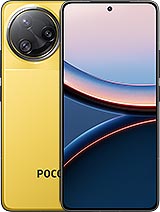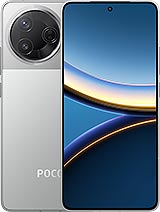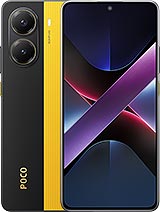Samsung Gear 360 hands-on: visit New York in VR

Samsung has plunged into VR, but it faces the same problem as anyone else in this space - lack of content. Worse, lack of user content. It's easy to shoot a photo or a video and watch it on your TV, but how do you capture something to view on the Samsung Gear VR headset?
The Samsung Gear 360 camera, of course! With two fisheye lenses you can snap a 360° x 180° panorama in one go. And while Google's Photosphere can do spherical panoramas too (albeit much more slowly), there's no way to record video - which the Gear 360 can.
Each camera is responsible for capturing 180° x 180° of the scene. You can toggle which camera is used (front, back or both). Even with just the one lens, the view is wider than almost any action cam out there.
The Gear 360 is IP53 certified, it can withstand splashes of water coming in at a 60° angle (e.g. splash from below as your run through a puddle). So, it's not ready to be submerged, but it should survive above-ground activities.


The accessories: Tripod, strap, 32GB microSD card • Carrying pouch
There are no cases like GoPro's, you at least get a tripod, a leather strap and a carrying pouch. The tripod screws in a standard mount so you can use others too (and selfie sticks). We also received a 32GB microSD card, a microfiber cloth to clean the lenses and a microUSB. Note that not all retailers may include the full package, but at least Amazon does.


The 1,350mAh battery and microSD card are hidden under a flap
You can capture 25.9MP photos or record video up to 3,840 x 1,920px in resolution at 30fps. There's a 60fps option at 2,560 x 1,280px. Note that due to how spherical panoramas work, they always have 2:1 aspect ratio.
The Samsung Gear 360 can work by itself, but you can pair it to your Galaxy smartphone via Bluetooth and then connect over Wi-Fi Direct. This gives you a much better interface and, of course, a viewfinder.
The interface on the camera itself is perhaps its biggest downside. Most action cams have clunky UIs and this one is no better. We think it mostly stems from not having enough hardware buttons - the Power key is also the Back key, the Shutter key is also the Select key, the Menu key is the down key.


The on-camera controls are clumsy and slow to use
So you tap Menu to scroll through settings and the Shutter key to select the one you want (or Power to go back). If you miss the option you want, you'll have to cycle through the whole menu (there's no up). The ball-shaped camera makes it easy to accidentally hit a button while just holding it too.
Once you get used to the menu system, you'll be able to snap photos, record videos, shoot time-lapse videos (up to 3,840 x 1,920px) and looping video.
This option shoots video in segments (the default is 5 minutes). The camera records continuously and when you hit the Shutter key, the last segment is saved. This way you never have to worry about missing the moment.
Sharing photos and videos from the Gear 360 is very easy - you can do it straight from the phone. You have to be okay with uploading to Facebook, Google Photos or YouTube, of course. We had to jump through hoops to embed the photos on this page and finally settled on a Google-made viewer.
Here are two 360° photos we took. The image quality is quite good, even in the low-lit restaurant (thanks in part to the f/2.0 lens). The stitching is seamless except at the north and south "pole" of the panorama where it's messy. And you inevitably capture your hand/tripod/selfie stick at the bottom.
Hint: if you're on a phone, you can use its compass/gyroscope to 'look around' both the photos and the videos.
Normally, we wouldn't promote the use of selfie sticks, but with 360° cameras they work better since they are thin and the camera's stitching mostly manages to erase them (more so than your hand). The tripod is nice, but short and you can't just leave it on the ground.


A look at the tripod and its mount
360° videos don't look as sharp as photos - that's a common problem with such cameras. The max video resolution is around 7.4MP, while photos have nearly four times the resolution. And you need a fairly beefy computer to watch the video in full resolution. Stitching has an additional issue, a misaligned line is visible where the view from the two cameras meet.
Note that this video was shot at 2,560 x 1,280px @ 60fps (~3.3MP). You can get double the resolution if you drop to 30fps and 3,840 x 1,920px.
If you're reading this on a phone, YouTube's embedded player probably doesn't handle the 360° video properly. You'll want to use the YouTube app and open the video directly. See? Sharing 360° content isn't smooth sailing (yet).
After Avatar, tech giants tried to push 3D TVs, but they face a problem - there wasn't enough content and users had no way to make their own. Sound familiar?
Some phones with 3D cameras did hit the market, but there aren't any now. Will VR meet a similar fate?
There are no phones capable of shooting a 360° x 180° panoramic image or video at the moment, but perhaps relegating that to a dedicated camera like the Samsung Gear 360 is a better idea.
The Gear 360 camera itself produces good results for consumer usage, but we'd stick to controlling it with a phone. You'll be able to enjoy its photos and videos much more with a VR headset - it doesn't have to be Gear VR, Google Cardboard will do fine. Even using the phone's accelerometer works, but is much less immersive.
Speaking of, all content captured by the Gear 360 is 2D, while VR headsets optimally want to show you a 3D image.
Samsung's Gear VR and Gear 360 make for a fine pairing, especially for VR enthusiasts. The 360 camera may not have as much of an impact on VR as the Oculus tech, but some people will have a lot of fun with it.
Reader comments
- AnonD-580026
- 03 Sep 2016
- KSg
Insta360 Nano 360° Nano VR Camera,just heard of it recently,its got higher resolution than the other 360 camera in this price range.The video quality is good and viewing it on the iPhone I didn’t seen any big issues,fits perfect in a clear water...
- Ricky Villacrez
- 20 Aug 2016
- 47f
The Gear 360 manager has to stitch it after recording. It's not practical at all.
- AnonD-548703
- 07 Aug 2016
- 4ce
My rule for smartphone photography and video capture is to record everything and sort it out in 'post production'; as the experts like to say. Following my prescribed method one winds-up with some 10%, or so, of content which is really outstanding. I...






 Samsung
Samsung Xiaomi
Xiaomi Xiaomi
Xiaomi Samsung
Samsung Xiaomi
Xiaomi


